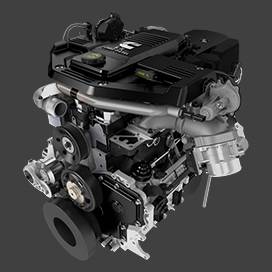Dec . 19, 2024 11:29 Back to list
remove brake drum without puller
How to Remove a Brake Drum Without a Puller
Removing a brake drum can sometimes be a daunting task, especially if you do not have the right tools at your disposal. A brake drum puller is usually the go-to tool for this job, but if you find yourself without one, there are alternative methods you can utilize to get the job done. This article will guide you through a step-by-step process on how to remove a brake drum without a puller, ensuring safety and effectiveness throughout the procedure.
Safety Precautions
Before embarking on the removal process, it’s crucial to ensure that you prioritize safety. Always wear protective gear, including gloves and safety glasses. Make sure the vehicle is parked on a flat surface and has the parking brake engaged. Use wheel chocks to prevent any movement of the vehicle during the procedure.
Step 1 Remove the Wheel
The first step in removing the brake drum is to take off the wheel. Loosen the lug nuts with a lug wrench while the wheel is still on the ground. Once the lug nuts are loosened, raise the vehicle using a jack and securely place it on jack stands. After this, fully remove the lug nuts and take the wheel off to expose the brake drum.
Step 2 Inspect the Brake Assembly
With the wheel removed, inspect the brake assembly. Look for any obvious signs of wear or damage and ensure there are no excessive rust or debris that could impede the removal of the brake drum. This step is not only vital for the drum's removal but also for general maintenance of the braking system.
Step 3 Check for Retaining Screws or Clips
Some brake drums are secured with retaining screws or clips. If your brake drum has these, locate and remove them using the appropriate screwdriver or pliers. Failure to remove these components will make it impossible to take the drum off, so ensure this step is not overlooked.
remove brake drum without puller

Step 4 Adjust the Brake Shoes
In most cases, the brake shoes may be slightly expanded against the drum due to wear, or they may be rusted in place. To alleviate this issue, locate the adjuster on the brake assembly (usually a star wheel adjuster) and turn it to retract the shoes slightly. This process will create clearance between the shoes and the drum, making it easier to remove the drum.
Step 5 Tap or Strike the Drum
Once adjustments have been made, the next technique for removing the drum involves tapping it. Using a hammer or rubber mallet, gently tap around the drum, applying even force all around. This action can help loosen the drum from its seating. Be cautious not to strike too hard, which could damage the drum or the brake components.
Step 6 Pulling the Drum Off
After you have tapped the drum and adjusted the shoes, attempt to pull the drum straight off the hub. If it does not drop free, check again for any obstructions, such as dirt or rust buildup. Continue tapping gently while pulling until the brake drum finally releases. Patience is key as forcing the drum off could damage the brake components.
Step 7 Clean and Maintain
Once the drum is removed, take the time to clean the brake assembly using brake cleaner and a wire brush. This maintenance step will not only make your brake system function better but will also prolong the lifespan of your brake components. Inspect all parts for wear, and replace any components that may be damaged before reassembling.
Conclusion
Removing a brake drum without a puller is entirely possible with the right techniques and safety precautions. By following these steps—removing the wheel, inspecting the brake assembly, adjusting the brake shoes, tapping the drum, and carefully pulling it off—you can successfully complete the task. Always remember that while improvising can save you a trip to the tool store, ensuring you have the proper tools in the future will make the job even easier. Regular maintenance of your brake system is crucial for ensuring your vehicle’s safety and performance, making it an essential skill for any vehicle owner.
-
Scania Brake Drums: OEM Quality for Optimal Safety & Durability
NewsAug.16,2025
-
R.V.I: Advanced Remote Visual Inspection for Precision
NewsAug.15,2025
-
Discover HYUNDA: Innovative Vehicles, Equipment & Solutions
NewsAug.14,2025
-
R.V.I: Unlock Advanced Insights & Real-time Performance
NewsAug.13,2025
-
Kamaz Brake Drum: Durable & Reliable for Heavy Duty Trucks
NewsAug.12,2025
-
Heavy Duty Iveco Brake Drum - Premium Quality & Safety
NewsAug.11,2025
